Whether your new foal arrived late in the winter or you are still awaiting their arrival, the first few years are paramount in their nutritional journey to help set them up for a healthy, happy future. The choice to breed your horse is an important one, taken with care to select just the right match up between mare and stallion for a desired foal outcome. What comes afterwards to ensure they reach their genetic potential is equally important through balanced nutrition and good environmental management.
The first three months.
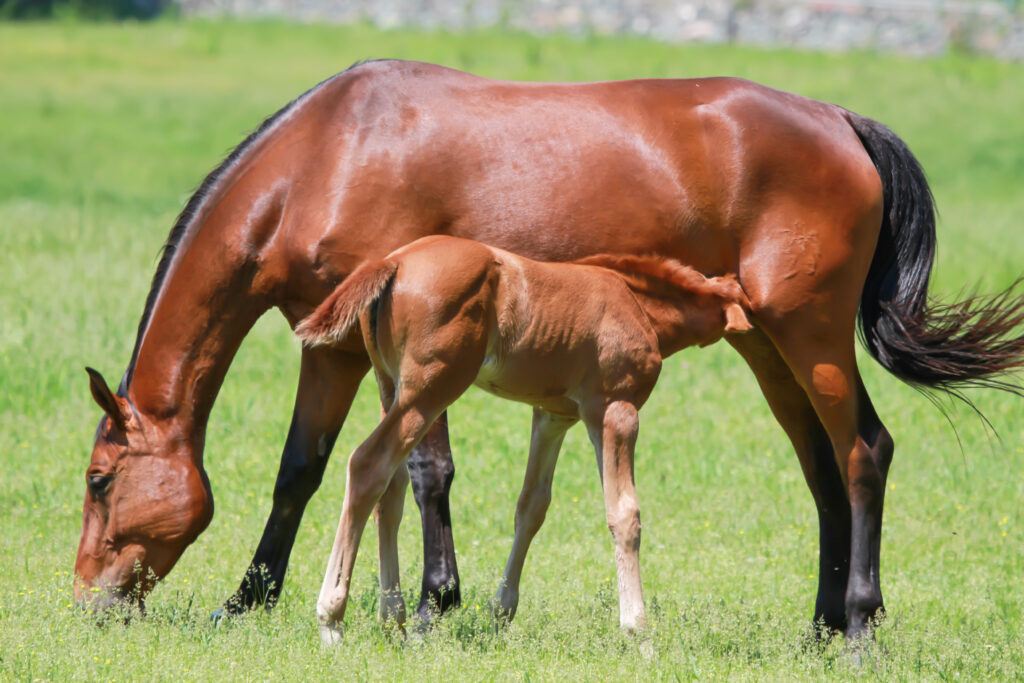
The last three months of gestation, and the first 3 months post parturition are a time of rapid foal growth and a heightened need for extra nutrients for your mare as she is feeding for two – her requirements for both are that of a racehorse! At the time of birth, your foal should be up and nursing within a few hours and it is this time that the mare passes critical antibodies through colostrum (or first milk). Without colostrum, your foal is highly susceptible to disease, so it is important to have a contingency plan in place if for any reason this passive transfer is unsuccessful.
New healthy foals will nurse multiple times in an hour, for minute long intervals, meaning high nutritional demands are on your mare to ensure the pair are healthy. A higher calorie diet composed of an elevated quality protein and a balanced, bioavailable mineral package is a must for the mare so she herself is of good condition, but also provides good nutrition through her milk.
While the first month of life is exclusively milk, foals who have access to their mother’s diet will often start nibbling on their feedstuffs shortly after this. Allowing foals a variety of different forages and feeds is beneficial as it can help to build a diverse microbiome in the new youngster, a valuable quality for long term digestive health. At this time, it is also helpful to already have your mare on a feed that doubles as a maternity and a development feed, for ease of the next chapter in your young foal’s life.
Weanlings and yearlings.
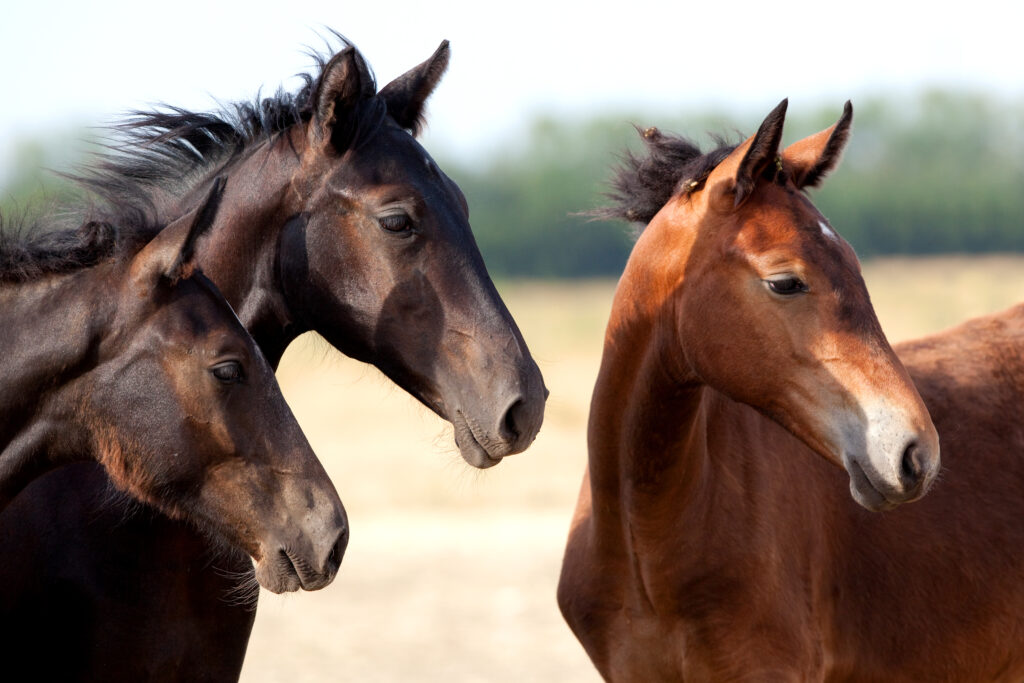
After a few months, the quality of your mare’s milk declines as the start of natural weaning occurs. You will notice your foal spends more time foraging than nursing. If you have not already, now is the time to begin introducing small amounts of a balanced concentrate as this ensures they are still receiving quality nutrition that mare’s milk no longer provides. A second benefit arises from introducing feed at this time as it won’t be long until true weaning occurs – a significant stressor in a young foal’s life. A familiar diet can help make this transition easier!
Balance is the key word in the growth diet – protein, calcium, phosphorus, zinc, selenium and vitamin E are just a few of the nutrients they need daily not only in proper amounts, but in proper ratios to each other to avoid developmental issues that could compromise future soundness. Choose growth feeds that have a full vitamin and mineral package, rather than choosing multiple supplements. Too much of one mineral can negatively affect the absorption of another equally critical mineral. While adding more or less of a particular mineral can be relatively harmless to the mature horse, imbalances in the first year of a foals life, in particular, can result in abnormalities.
Two years old and beyond.
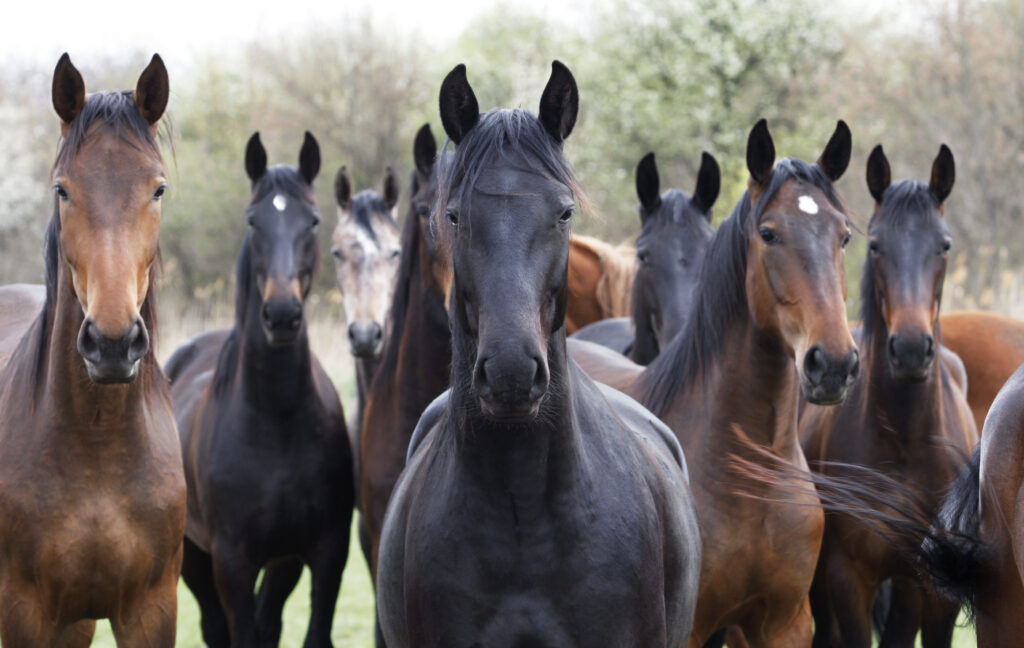
By the time your growing horse has reached it’s second year, they are upwards of 90% of their adult size and significant growth has occurred in their musculoskeletal systems. Between the yearling stage and maturity, slow, steady growth is the objective as rapid growth is a potential factor in the development of osteochondrosis of the joints. Genetics and environmental management aside, moderate growth is achieved by selecting a feed that has lower energy, lower starches and elevated trace mineral quantities.
Also of importance is feeding to tag requirements – too little for your foals weight and size can mean stunted growth, while overfeeding for their weight and size can result in these skeletal abnormalities. If you are unsure about quantities to be fed at which stage in your growing horses’ life, equine specialists are readily available to help figure this out.
Depending on the breed of your horse and what your plans are for them, young horses can stay on a development feed beyond the second year, essentially until they are mature and ready to go into whatever career awaits them. Active horses typically need more energy from their rations, so a transition from their development feed to a performance feed is the natural next step for them whether they start at 3 or at 6 or even later!
Good nutrition starts in utero, and just like humans, diet is critically important both while the foal is growing in the dam and through the first few years to maturity to help them reach the genetic potential you envisioned years ago while breeding your beloved mare. Setting them up for a healthy future starts today!
For more information or to schedule an on-farm call or hay analysis from one of our reps, visit our website, contact us, or email us directly at: happyhorses@masterfeeds.com
Product Spotlight
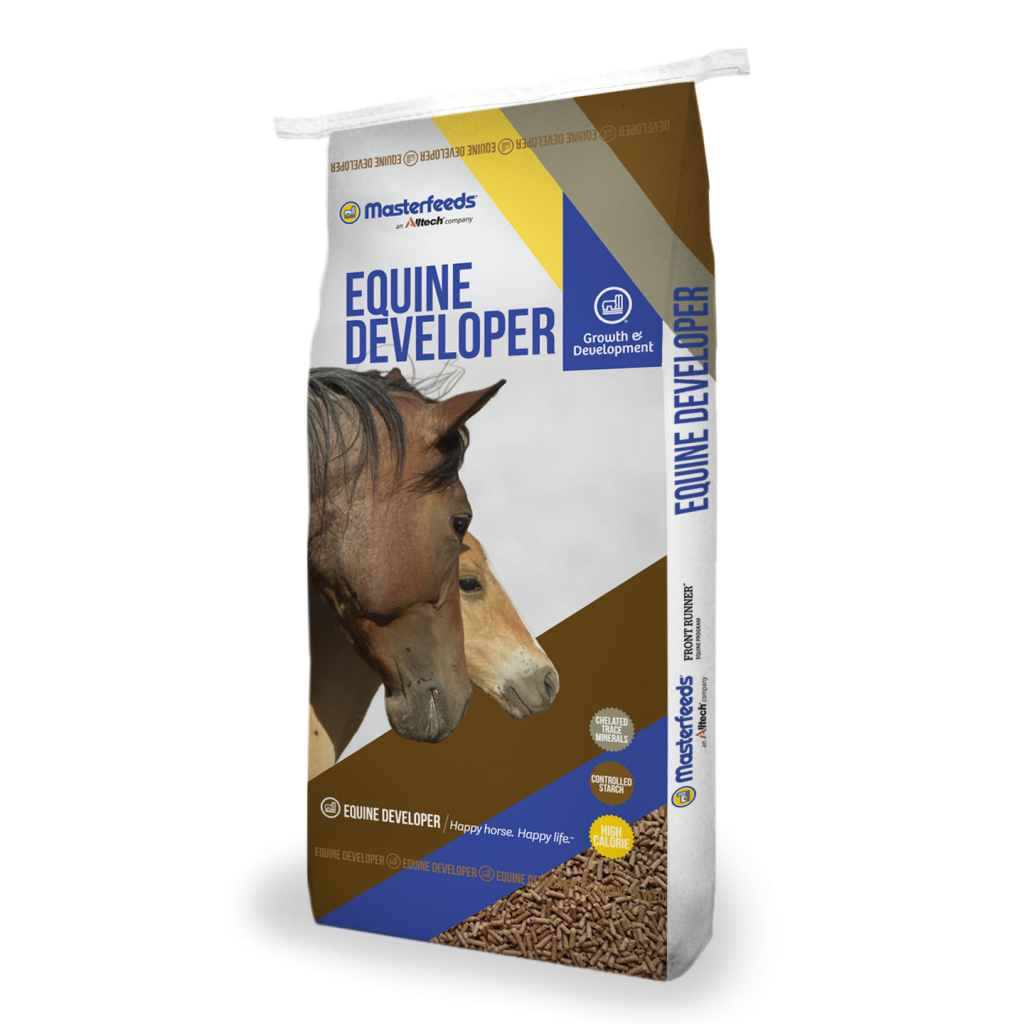
EQUINE DEVELOPER (PELLET) EAST | WEST
FOR BROODMARES, WEANLINGS AND YEARLINGS
14% Equine Developer is an excellent feed for broodmares, growing yearlings and two year olds. Well balanced protein, amino acids and energy levels, along with controlled starch encourage balanced growth. The formulation is made to help reduce the incidence of developmental problems.
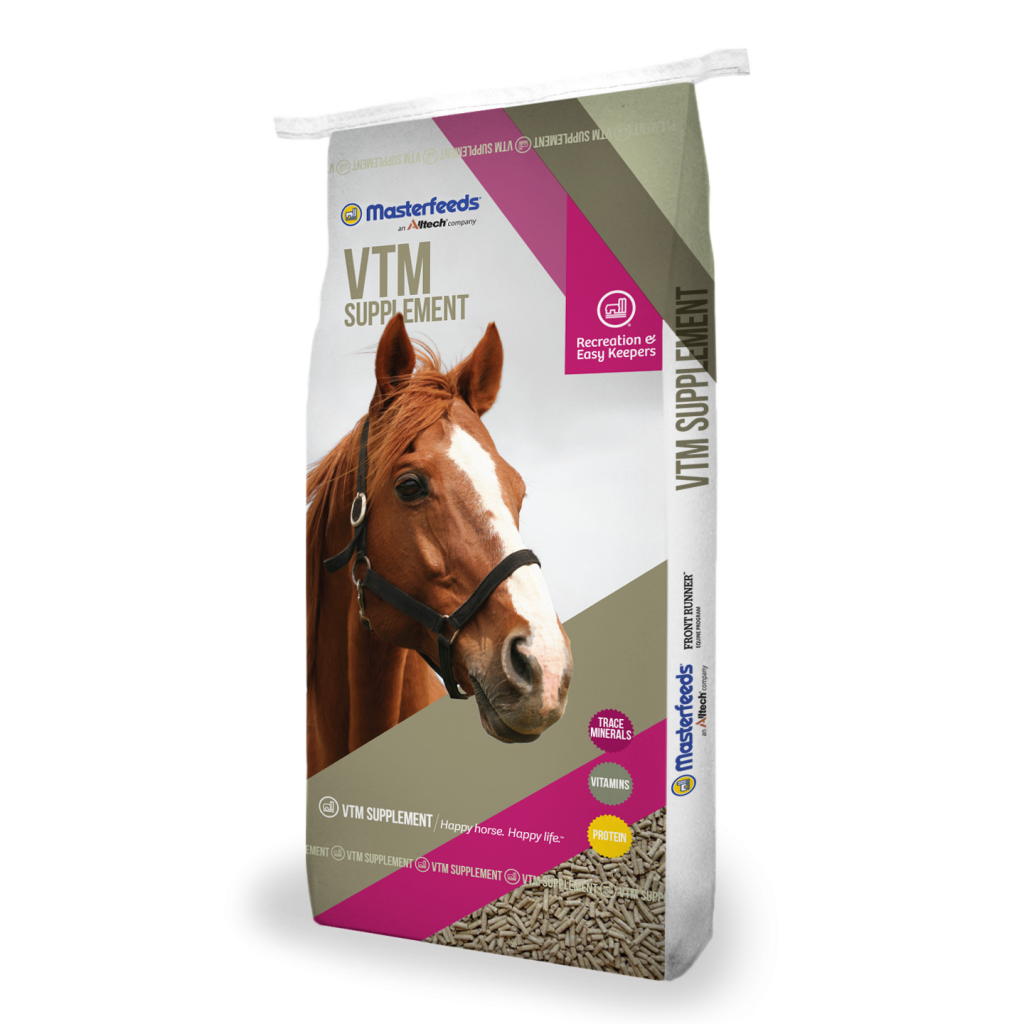
VTM SUPPLEMENT (PELLET) EAST | WEST
FOR ALL CLASSES OF HORSES WHEN EXTRA NUTRIENTS ARE REQUIRED
Masterfeeds VTM (pellet) is a trace mineral and vitamin supplement with elevated protein. It can be mixed with grains to make your own ration or topdressed on complete feeds to add additional minerals, vitamins and protein. Very palatable and versatile, it’s a great choice for all classes of horses when extra nutrients are required.
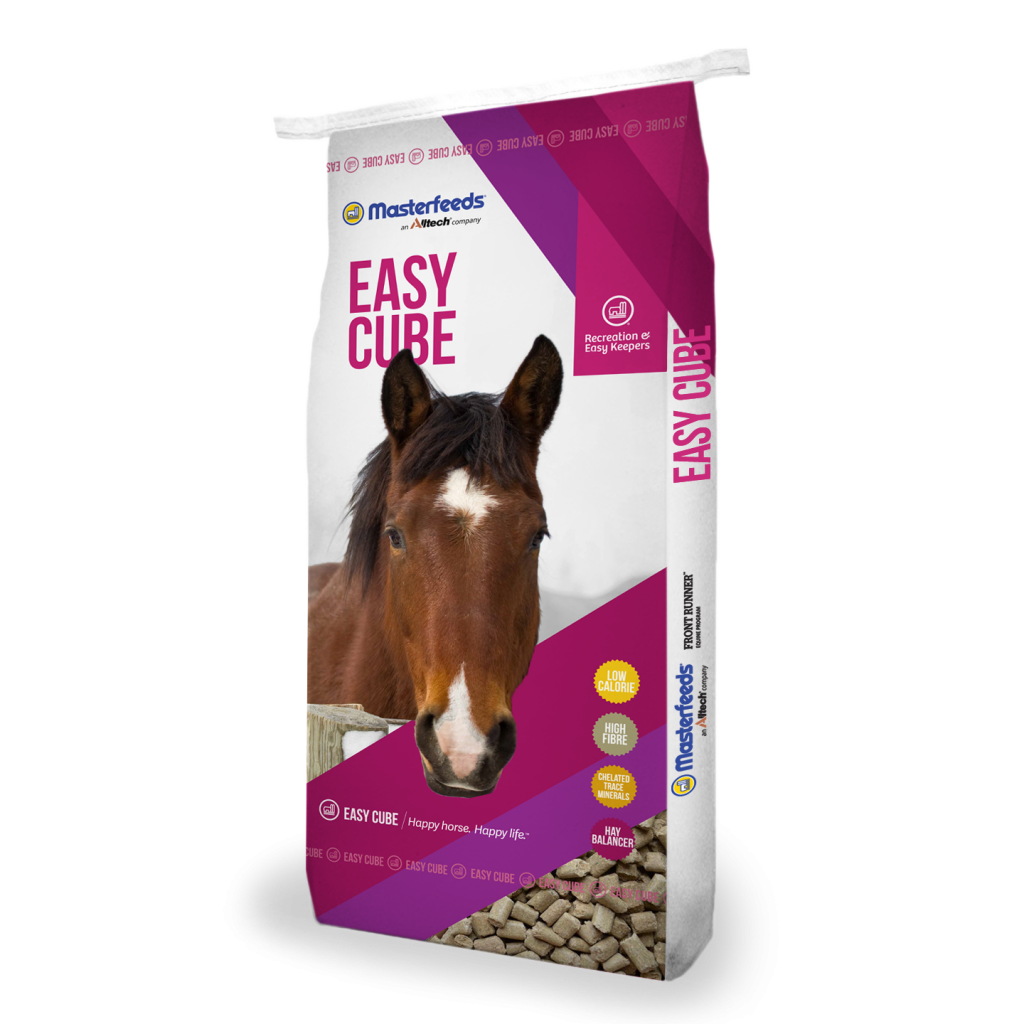
EASY CUBE EAST | WEST
FOR EASY KEEPERS & ALL CLASSES OF HORSES WHEN EXTRA NUTRIENTS ARE REQUIRED
Masterfeeds Easy Cube is a 12% protein, mineral and vitamin supplement that can be used as a great stand alone feed for easy keepers. Designed to be fed with hay for horses who need little grain to maintain weight, it’s also a great choice for pregnant mares on pasture or a mineral topdress.
Product Spotlight
- Winter Nutrition Tips
- Feeding the Mare and Foal
- Breaking Down Nutrition
- Spring Nutrition Tips
- Feeding for Performance
- All About Hay
- Feeding the Senior Horse
- Fall Nutrition Tips
- Feeding Supplements
- Economical Horse Management & Feeding Tips
- The Beginner’s Guide to the Equine Digestive System
- Macronutrients: The “Big Three” of the Equine Diet
- Feeding the Active Senior
- Feeding the Racehorse
- Feeding the OTTB
